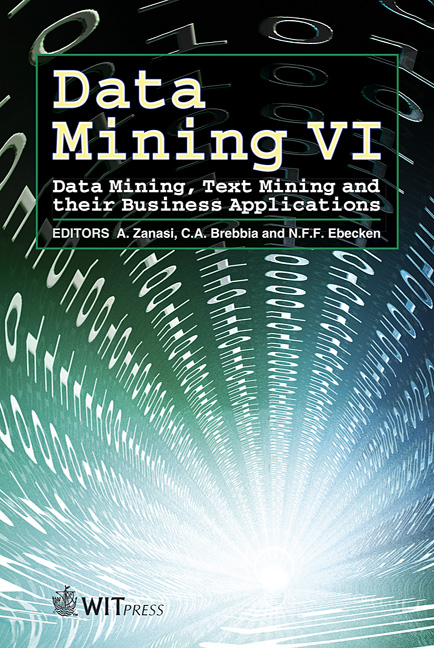Evaluation Of Clinical Prediction Rules Using A Convergence Of Knowledge-driven And Datadriven Methods: A Semio-fuzzy Approach
Price
Free (open access)
Volume
35
Pages
10
Published
2005
Size
533 kb
Paper DOI
10.2495/DATA050411
Copyright
WIT Press
Author(s)
M. Kwiatkowska, N. T. Ayas & F. Ryan
Abstract
Researchers and practitioners in medicine use various clinical prediction rules to estimate the probability and severity of a disease. Based on a limited number of factors from medical history, physical examination, and laboratory tests, the practitioners use these rules to expedite diagnosis and treatment for serious cases and limit unnecessary tests for low-probability cases. However, before the rules can be used in clinics, they must be validated on large and diversified populations and evaluated in clinical settings. A computer system providing intelligent data analysis and data mining techniques can facilitate this lengthy and costly process. This paper describes a conceptual framework and a prototype system for the rule evaluation process. The study concentrates on predictive rules used in the diagnosis of obstructive sleep apnea (OSA), a common and serious respiratory disorder. The prototype system, Hypnos, includes (1) a framework for rule definition, and (2) a mechanism for rule evaluation. The rule definition framework is based on a semiotic and a fuzzy logic approach. The semiotic description incorporates a rule’s syntax, semantics, and pragmatics. The fuzzy logic models the imprecise features. The rule evaluation mechanism supports first the validation and then comparison of the rules built by the domain experts and the rules generated by the data-driven method. The results from both methods are compared based on rule accuracy, interpretability, generality, and clinical utility. The prediction rules for OSA are described and evaluated using four datasets (1,300 records) from two clinics. The results show that rules obtained from data mining can confirm, contradict, or expand the rules created by medical experts. Therefore, the paper suggests a combination of knowledge-driven and data-driven methods for rule derivation and validation. Keywords: clinical prediction rules, machine learning, decision trees, rule induction, obstructive sleep apnea, fuzzy logic, semiotics, diagnosis.
Keywords
clinical prediction rules, machine learning, decision trees, rule induction, obstructive sleep apnea, fuzzy logic, semiotics, diagnosis.





